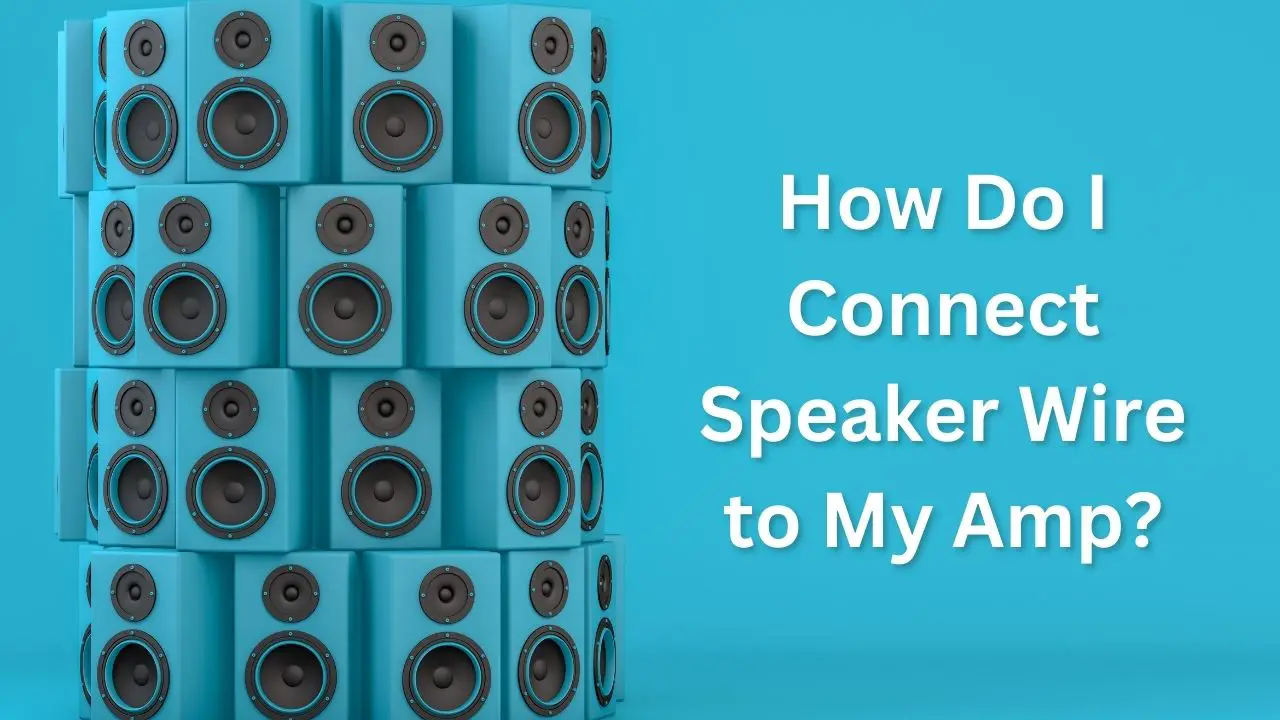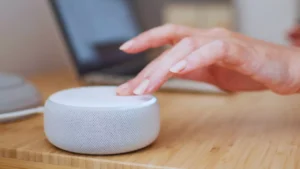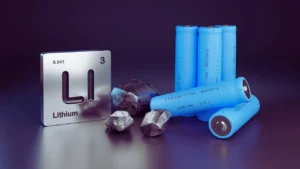Connecting speaker wire to an amplifier is a necessary step in setting up a home audio system. Proper wiring techniques will ensure a secure and reliable connection while following safety precautions is essential to prevent accidents and damage.
This article provides a comprehensive guide to help you connect speaker wire to your amplifier, including common mistakes to avoid as well as I will answer some most frequently asked questions.
So, keep reading!
In This Article:
How Do I Connect Speaker Wire to My Amplifier?
If you are trying to connect the speaker wire to your amplifier, then these are the 5 simple steps you must follow:
- Gather Materials
- Strip the Insulation from the Wire
- Connect the Wire to the Amplifier
- Connect the Wire to the Speakers
- Troubleshooting
Step 1: Gather Materials
Before you start, check that you have all of the necessary materials available to you. You will require:
Speaker wire
The gauge of the wire (i.e. its thickness) determines its ability to carry an electrical current. As a general rule, use at least 16-gauge wire for distances up to 50 feet, and 14-gauge wire for distances up to 100 feet. For longer distances, you’ll need thicker wire.
Wire strippers
These are used in the process of stripping away the insulation from the wire’s terminals.
Wire connectors
These can be spade terminals, banana plugs, or other types of connectors. Choose connectors that are compatible with your amplifier and speakers and that provide a secure connection.
Step 2: Strip The Insulation from The Wire
Using wire strippers, remove the insulation from the ends of the wire to a depth of about half an inch. Be sure to remove only the insulation, not any of the wire strands.
Step 3: Connect the Wire to the Amplifier
There are several ways to connect speaker wire to an amplifier, depending on the type of connectors it has. Some amplifiers have binding posts or screw terminals that you can use to secure the wire. Others may have spring-loaded connectors or banana plugs.
Common Mistakes
Using the wrong gauge of wire
Be sure to use the proper gauge of wire for the distance between the amplifier and speakers.
Cross-wiring the speakers
Check to see that the wire with the positive terminal is connected to the positive terminal on the amplifier and that the wire with the negative terminal is connected to the negative terminal on the speakers.
Using damaged or frayed wire
Inspect the wire for any visible damage before making the connection. If the wire is frayed or damaged in any other way, you should replace it.
Step 4: Connect the Wire to the Speakers
Most speakers have either binding posts or screw terminals for connecting the wire. So, you don’t have to do much, just understand how the wire will be connecting, especially connectors.
Common Mistakes
Using the wrong connectors
Be sure to use connectors that are compatible with your speakers.
Tightening the connectors too much
Over-tightening the connectors can strip the threads or damage the wire. Use a light touch and avoid over-tightening.
Step 5: Troubleshooting
Once you’ve connected the speaker wire to the amplifier and speakers, turn on the amplifier and test the connection by playing some music through the system. If everything is working properly, you should hear sound coming from the speakers.
If you don’t hear anything, check the connections to make sure they are secure and that the wire hasn’t become disconnected.
If the problem persists, you may want to try the following troubleshooting steps:
Check The Speaker Wire
Make sure the wire is in good condition and that there are no obvious signs of damage, such as kinking or fraying, on it. If there is any damage to the wire, it will need to be replaced.
Check The Amplifier
Make sure the amplifier is turned on and functioning correctly before using it. You may want to try connecting a different set of speakers to the amplifier to see if the problem is with the speakers or the amplifier.
Check The Audio Source
Make sure that the audio source (e.g. phone, tablet, computer, etc.) is working properly and that it is set to the correct output. You may want to try a different audio source to see if the problem is with the device.
Can I Connect Multiple Speakers to One Amplifier?
It is possible to connect multiple speakers to a single amplifier, but it’s important to pay attention to the power ratings of the amplifier and speakers to ensure that you don’t exceed the amplifier’s capabilities.
To connect multiple speakers to a single amplifier, you will need to purchase additional speaker wire as well as connectors. The process is similar to connecting a single speaker, with the main difference being that you’ll need to use additional wire and connectors to connect the additional speakers.
There are a number of different ways to connect multiple speakers to an amplifier, and the method that is used will depend on the configuration of both the speakers and the amplifier. The following are some common configurations that can be considered:
Series Connection
In a series connection, the speakers are connected in a chain, with the positive terminal of the first speaker connected to the negative terminal of the second speaker, and so on. This configuration is typically used when the speakers have the same impedance (i.e. electrical resistance).
Parallel Connection
As part of a parallel connection, the positive terminal of each speaker is wired to the positive terminal of the amplifier, and the negative terminal of each speaker is wired to the negative terminal of the amplifier. This configuration is typically used when the speakers have different impedances.
Mixing Series and Parallel Connections
In some cases, it may be necessary to mix series and parallel connections to achieve the desired configuration. For example, you may want to connect two speakers in series and then connect the resulting pair in parallel with a third speaker.
My Recommendations
Use Labeled Wire
It can be helpful to use labeled wire, especially if you have multiple speakers or are working with a complex audio system. This will help you keep track of which wire goes where and reduce the risk of cross-wiring.
Follow The Manufacturer’s Instructions
Every amplifier and speaker is different, so be sure to consult the manufacturer’s instructions for specific wiring instructions and recommendations.
Use Proper Tools
In addition to wire strippers, you may need other tools, such as a screwdriver or pliers, to make the connections. Use the proper tools to ensure a secure connection and avoid damaging the wire or components.
Test The Connection Regularly
Test the connection periodically to make sure everything is working properly. This can help you catch any issues early on and prevent problems down the line.
Final Words
By following proper wiring techniques and avoiding common mistakes, you can ensure a secure and reliable connection that will allow you to enjoy high-quality sound from your speakers. Just be sure to use caution when working with electricity and follow all safety precautions to ensure a safe and successful installation.
With the right tools and some careful planning, you can easily connect the speaker wire to your amplifier and enjoy your favorite music or movies.
Frequently Asked Questions
Can I Mix and Match Different Types of Connectors?
In general, it’s best to use the same type of connectors on both the amplifier and the speakers. This will ensure a secure connection and minimize the risk of damage. However, some amplifiers and speakers are designed to accept multiple types of connectors. In these cases, it may be possible to mix and match connectors as long as they are compatible with the components.
Can I connect a subwoofer to my amplifier?
Yes, it is possible to connect a subwoofer to an amplifier. Subwoofers are designed to reproduce low-frequency sounds, such as bass and percussion, and can be a great addition to any home audio system.
Is It Necessary to Use Connectors When Connecting Speaker Wire to an Amplifier?
While it is not strictly necessary to use connectors when connecting speaker wire to an amplifier, they can make the process easier and result in a more secure connection. Connectors allow you to easily attach and detach the wire, and they can help to prevent the wire from coming loose or becoming damaged.
Using connectors can also make it easier to identify the positive and negative wires, which is important for proper wiring.





